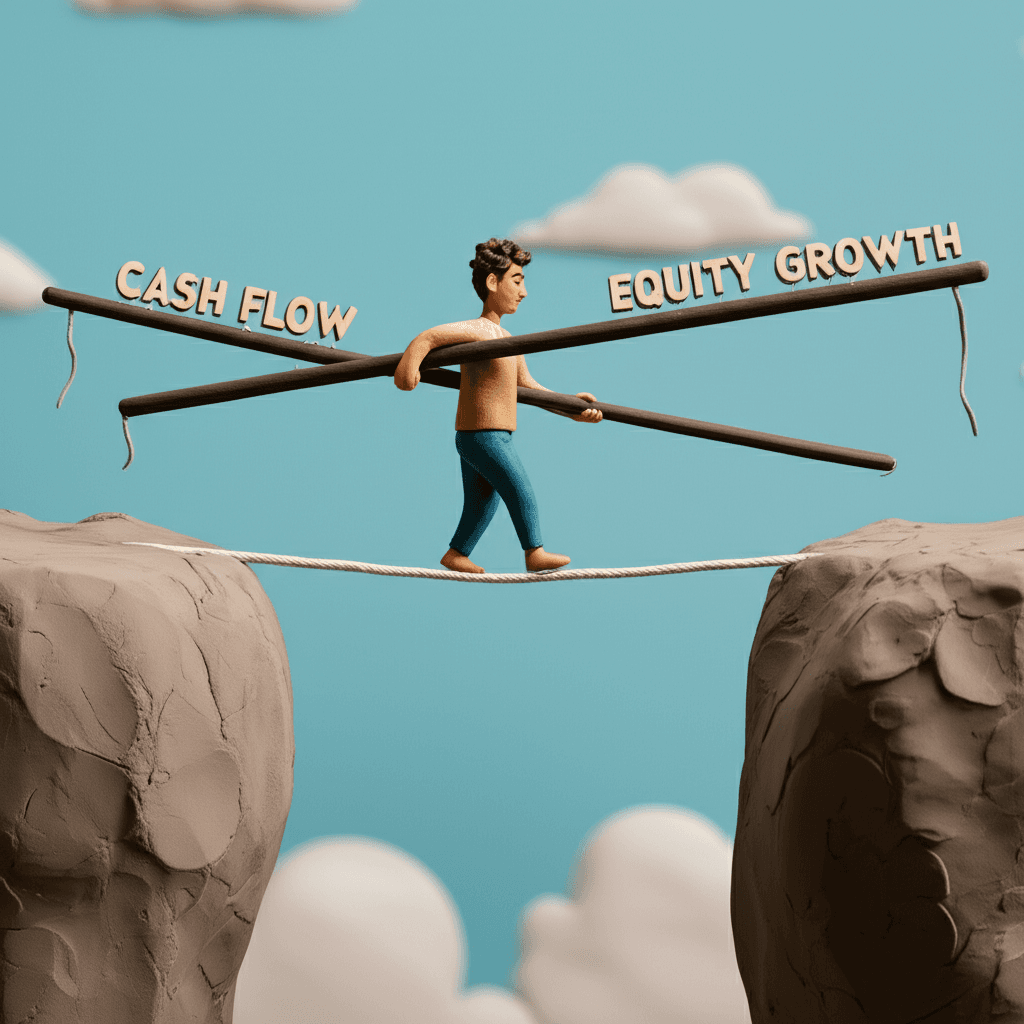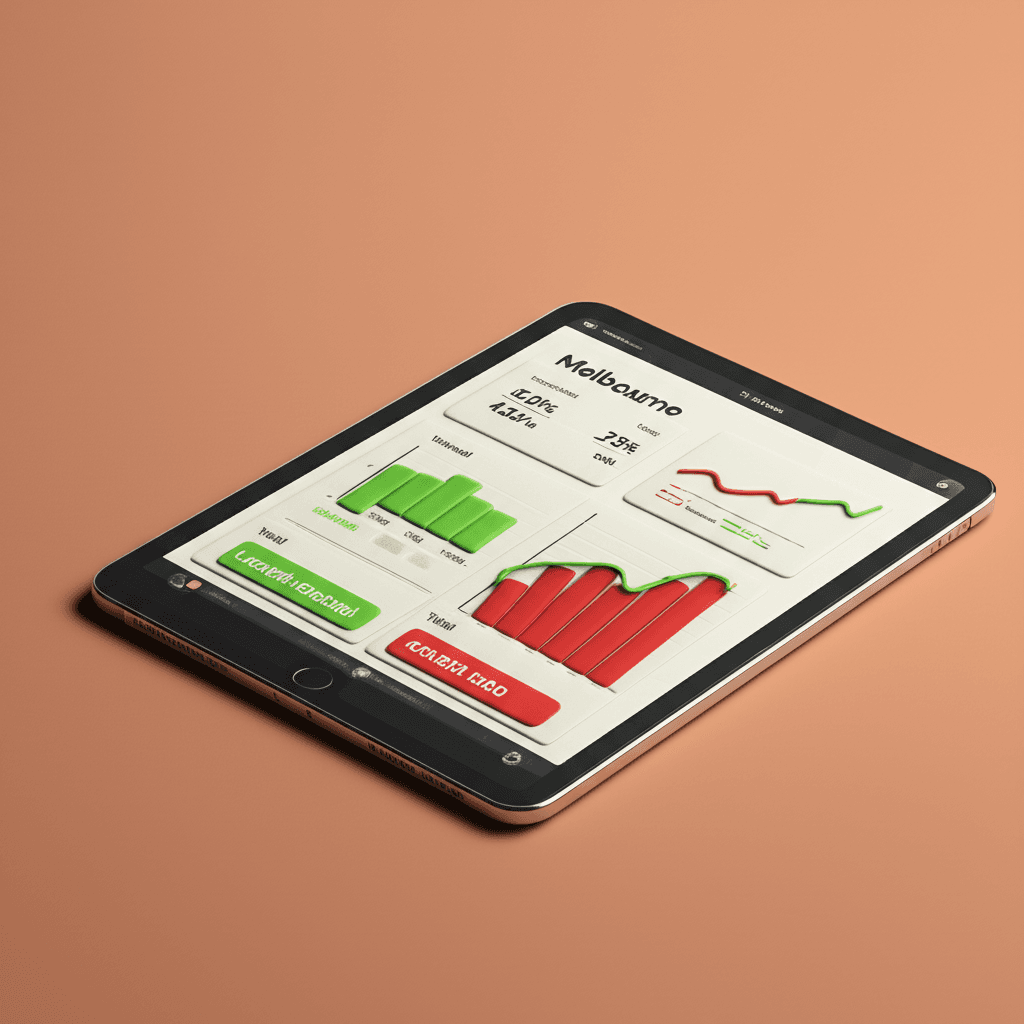Melbourne Property Investing: Balancing Risk and Reward in 2025
Understand the hidden risks of land tax and low yields to make strategic investment decisions and protect your portfolio's growth in Victoria's capital.

Introduction: The Melbourne Property Dilemma
The Melbourne property market has a powerful allure. As one of Australia's darling cities, it commands global recognition and holds a certain prestige for investors. In 2025, there's a growing sentiment that after a period of stagnation, the market is primed for growth, with a rising population and the potential for good deals on the ground. However, buying with your heart—or based on hype alone—can be a fast track to derailing your investment goals.
Beneath the surface, significant challenges like punitive land taxes, low rental yields, and negative investor sentiment create a complex environment. For the unprepared investor, a poorly planned purchase in Melbourne could indeed kill portfolio growth. This guide unpacks the critical factors you must balance to increase your chances of profiting in Melbourne without sacrificing your long-term financial ambitions.
The Number One Hurdle: Victorian Land Tax
The most significant headwind facing Melbourne investors is the current land tax regime. Introduced in response to post-pandemic economic pressures, these taxes have made holding investment properties significantly more expensive, forcing many landlords out of the market. Even a single investment property can attract a land tax bill of several thousand dollars per year right from the start.
The real danger, however, is how these costs scale and cannibalise your portfolio. The impact is not linear; it's exponential. Consider this comparison for properties held in a personal name:
Two Properties: With a combined land value of $1 million ($500k each), the annual land tax is approximately $4,650.
Five Properties: With a combined land value of $2.5 million ($500k each), the annual tax skyrockets to $23,400.
This staggering increase means that for a larger portfolio, the entire rental income of one property could be consumed by land tax alone. This is a critical variable that must be factored into any investment calculation, and investors should use powerful real estate analytics to model these costs accurately.

The Cash Flow Conundrum: Low Yields Meet High Costs
Compounding the land tax issue is Melbourne's relatively low rental yield. Following a long growth cycle from 2011 until the pandemic, property prices remain high relative to rents. Even in traditionally high-yielding outer suburbs like Melton or Werribee, investors are fortunate to achieve a gross rental yield of 4-4.5%.
When you factor in current interest rates of around 6.5%, the property is already significantly negatively geared before accounting for standard holding costs. Add the hefty land tax on top, and the holding cost becomes substantial. This negative cash flow directly impacts two crucial elements of building a property portfolio: holdability and serviceability.
The Portfolio Tightrope: Balancing Holdability and Serviceability
Building wealth through property requires acquiring multiple assets over time. The journey is like walking a tightrope, where you must constantly balance cash flow and equity. An investment in Melbourne can dangerously unbalance your position and risk a fall.
1. Holdability: If each property in your portfolio is costing you thousands of dollars a year to hold, your financial resilience is weakened. Life happens—job changes, unexpected expenses—and a portfolio that bleeds cash becomes unsustainable. During tough times, you may be forced to sell assets prematurely, missing out on the long-term growth you were banking on.
2. Serviceability: Banks are hesitant to lend more money to investors who are already managing significant weekly losses on their existing properties. A portfolio of negatively geared Melbourne properties will quickly hit a borrowing ceiling, preventing you from buying the next property and the one after that. The single most important question to ask is: "Does this purchase allow me to buy the next one?" In Melbourne, the answer is often no.

A Strategic Approach: Who Should Buy in Melbourne and How?
This isn't an anti-Melbourne manifesto. It's a call for a strategic, data-driven approach. Melbourne is not the place for a first-time investor aiming to build a large portfolio from scratch. However, for an experienced investor with a solid foundation, it can be a calculated move.
If you have an existing portfolio in markets like Perth or Brisbane that generates positive cash flow, you may be in a position to absorb the holding costs of a Melbourne property. This allows you to gain exposure to a market that is arguably at the bottom of its cycle with significant upside potential, driven by massive population growth (140,000-150,000 people in 12 months).
The key is to improve the numbers from the outset by buying smart. Focus on acquiring properties under market value to manufacture instant equity. For example, areas like Werribee, a blue-collar suburb undergoing gentrification, present opportunities to find off-market deals. Securing a four-bedroom house for $555,000 when comparable sales are at $650,000 instantly improves your equity position and effective rental yield, making the investment far more sustainable.
Conclusion: Invest with Your Head, Not Just the Hype
Investing in Melbourne in 2025 is a high-stakes game that demands caution and a clear strategy. While the potential for growth is real, the risks posed by land tax and poor cash flow can permanently stall your portfolio-building ambitions. Before you buy, you must be brutally honest about your financial position and long-term goals.
Key Takeaways:
Acknowledge the Risks: High land tax and low rental yields create significant negative cash flow, impacting your ability to hold and expand your portfolio.
Know Your Strategy: Melbourne is better suited for experienced investors who can absorb holding costs, or for those who can secure significant under-market deals to improve the financial metrics from day one.
Balance Your Portfolio: Don't put all your eggs in one basket. Consider balancing a Melbourne property with higher-yielding investments in other capital cities like Perth or Adelaide to maintain healthy overall cash flow.
Consult the Experts: Your mortgage broker is your most important advisor. They can model the impact of a purchase on your future borrowing capacity, ensuring your next move doesn't become your last.

Ready to make data-driven investment decisions? Explore HouseSeeker's Real Estate Analytics Hub to analyse market trends and find your next high-performing property.
Frequently Asked Questions
Is Melbourne a bad place to invest in property in 2025?
Not necessarily, but it requires a very specific strategy. It is not recommended for new investors or those with limited cash flow due to high holding costs from land tax and low yields. Experienced investors with a strong financial buffer may find opportunities by buying under market value in a city with strong long-term growth fundamentals.
What is the single biggest risk for investors in Melbourne right now?
The combination of high, scaling land tax and low rental yields presents the biggest risk. This duo creates significant negative cash flow, which can make properties difficult to hold long-term (holdability) and can prevent banks from lending you more money for future purchases (serviceability), effectively stopping your portfolio growth.
How can I find properties under market value in Melbourne?
Finding under-market or off-market deals often requires deep market knowledge and strong relationships with real estate agents. It's about identifying motivated sellers in areas poised for gentrification, like Werribee or parts of Geelong. An experienced AI-powered buyer's agent can uncover these opportunities that aren't available to the general public.
